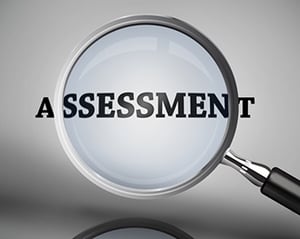 For many companies, calling in a motive power management company to perform an industrial site assessment is a big step. It means that the company's leadership is willing to take a look under the hood of their operation to see how efficient or inefficient it truly is. At the core of the commitment is a high level of trust between the company and the power management partner they've chosen for the assessment.
For many companies, calling in a motive power management company to perform an industrial site assessment is a big step. It means that the company's leadership is willing to take a look under the hood of their operation to see how efficient or inefficient it truly is. At the core of the commitment is a high level of trust between the company and the power management partner they've chosen for the assessment.
In this stage of the process, typically you've done enough vetting to ensure you're in the right hands. However, what if you're not in the right hands? Just in case, here are some questions you should be asking yourself once the assessment is underway.
Are They Including You in the Process?
Sure, your power partner is the expert, but that doesn't mean they don't need your input to find a customized solution. No one has more inside knowledge of how your operation works than you do. By working hand-in-hand, you and your power partner can undercover the idiosyncrasies that make your power needs unique. It's also important to keep in mind there's no one person in your company that can do this; different levels of company management must be included in the process to ensure that all the motive power bases are covered.
Have They Provided Supporting Data?
Any motive power recommendation should be supported by comprehensive data. Honestly, they should be giving you data until you can't stand it anymore. By taking a full equipment inventory, looking at truck hour usage history, inspecting battery chargers, and completing a cost-of-ownership analysis—and these are just a few items on the assessment checklist—your power partner should be able to quantify your strengths and weaknesses so that you have clear understanding of why the solution they're offering is the right one.
Is Their Recommendation Backed by Math?
Determining the fleet size of your operation isn't guesswork. It must be determined by a mathematical equation. Your power partner should have the experience to deliver this equation to you, and have the patience to walk you through it. Developing the fleet size formula—as well as the kinds of batteries and chargers that will complement it best—is the culmination of the assessment, where that supporting data and collaboration finally meet to offer a solution. And that formula, like your solution, is unique to you and your operation.
Is Your Assessment Up to Snuff?
Again, most companies go to great lengths to ensure they've made the right choice, and if that's the case, then your power partner will be doing these things without you having to ask them. But if you feel like you're not being provided hard data, or if red flags start to fly, it's important to raise your hand and ask these questions. By doing so, you can ensure that your assessment is proceeding smoothly, and that your ultimate goal of maximum fleet efficiency will be achieved.


